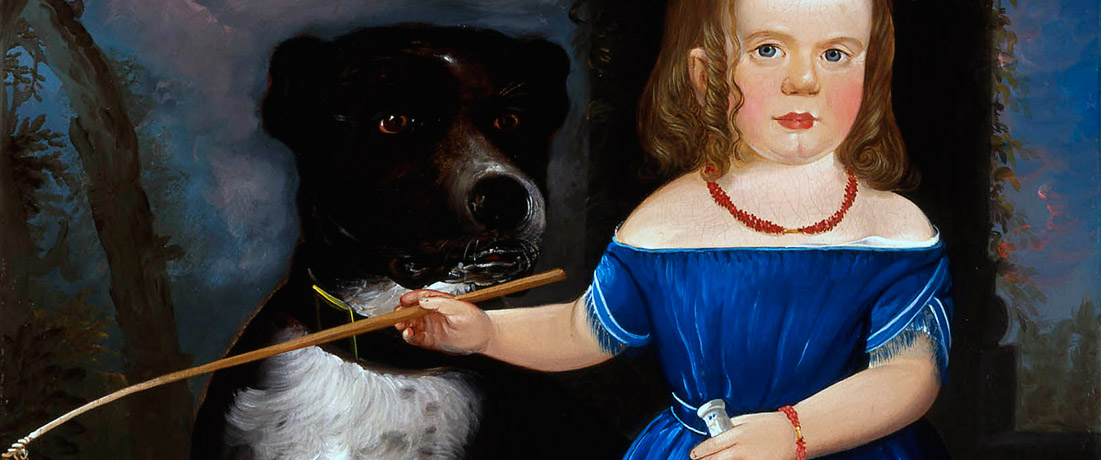Little Women, Little Men: Folk Art Portraits of Children from the Fenimore Art Museum
September 22, 2006 - February 04, 2007
Attitudes toward childhood changed radically in nineteenth-century America. In the seventeenth century the Puritan concept of the child was that of a miniature adult-in-the-making beset by innate evil. During the eighteenth century, under the influence of sweeping social changes including the European Enlightenment, the American Revolution, and the rise of a middle class, attitudes toward children changed, and for the first time “childhood” was valued as a distinct stage of human life and development. The Christian notion of the child as born in original sin but correctible through rigid discipline, hard work, and corporeal punishment gave way to a Romantic concept of a child born innocent of adult faults, social evils, and sexuality. Across Europe and the United States, paintings of children proliferated, resulting in the “child portrait” becoming a distinct genre in Western art.
American folk art is one visual manifestation of these profound societal and pictorial changes. During the nineteenth century, itinerant portrait painters, frequently known as “limners,” traveled the northeast United States in search of commissions. Virtually all of the works in Little Women, Little Men were created in New England, with many from Massachusetts. Several of the artists— Erastus Salisbury Field, Joseph Whiting Stock, and Ammi Phillips—had particularly strong ties to the Berkshire region. Many had little formal training and created portraits with bold patterns and flat colors, recalling such utilitarian art as shop signs and banners. Demand for paintings increased as the middle classes prospered, and children were among the limners’ most frequent subjects. Parents commissioned them to record a family’s hope for the future or to memorialize children who had died. Children were often represented with a pet or a favorite toy, depictions that made clear the difference between a masculine public sphere and feminine domestic sphere: boys are often shown with whips and tools, girls with dolls and flowers.
This exhibition was organized by the Fenimore Art Museum, Cooperstown, New York. It is organized for the Frye by Chief Curator Robin Held.
Child in Blue with Dog (detail), 1848, William Matthew Prior (1806–1873), oil on canvas, 35.625 x 29 in., Fenimore Art Museum, Cooperstown, New York. ©New York State Historical Association, Cooperstown, NY. Photo: John Bigelow Taylor, NYC.
